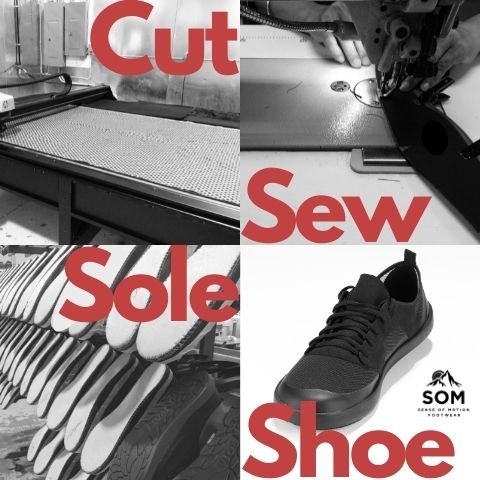How much do you think about your shoes: their weight, shape, where they were made? For most of my life, footwear fell into two categories: dress shoes and everything else. I wore the cheapest I could find and assumed comfort was measured by the cushion inside. Then I began working at a shoe factory and learned just how much my feet had been missing.
It has been eight months since I began my SOM journey, chatting with customers, filling orders, posting social media content, and in conjunction, wearing barefoot-feel sneakers. While debates will continue as to what constitutes a minimalist shoe, before SOM, my only experience with minimalism was from art class. I had never heard of stack height or zero drop. My shoe knowledge revolved around finding the cheapest deal and putting as much between my feet and the ground as possible. But listening to my feet this past year has taught me one tried and true lesson: when it comes to comfort, less is more.
Sell Me Your Attention

I grew up in a generation that thought “pumping up” a rubber bubble on the front of their sneakers could help them dunk a basketball. While Michael Jordan and Bugs Bunny no longer team up to sell shoes, the lengths some companies will go to over-engineer attention has never slowed. New ways to shape shoes. New ways to pad shoes. New “gel-infused, air-cushioned, honeycomb, hollow blade soles that feel like pillows while adding spring to your sprints and rigidity to your climbs.” The advertising worked on me. I had always assumed my feet were happiest when stuffed inside an ergonomic cocoon with laces. Why would I want to feel the ground? It’s hard and bumpy and cold down there. I let the shoes decide how my feet moved, when it should have been the other way around.
Time to Adjust
During the first few weeks in my SOM HiLites, my feet learned what it was like to be themselves in footwear--to spread and breathe and be free to keep their shape with every step. It was an adjustment for sure; every significant change is. My toes flexed more than previous shoes had allowed. My soles embraced the terrain rather than being insulated from it. My posture didn’t tip, as the elevated heels of previous athletic shoes would pitch my body forward. I was standing upright, on solid ground, moving with the control and balance I’d only experienced while barefoot.

Now, more mindful of my motion, my stride began to change. I thought walking barefoot would be no different than walking in shoes, but the decades of thick soles meant I’d never felt how much my heels dug into the ground. To avoid this heel-striking, I shifted my weight to the front of my feet, dispersing my energy throughout the entire shoe. Again, this was an adjustment that took time to become natural, with plenty of instances of stepping back into old habits, but the more I traveled in my HiLites, the stronger my feet became, and the more my SOMs felt like a second skin.
To learn more about the steps you can take when adjusting from traditional footwear to SOM shoes, please check out our blog, New to Barefoot Shoes?
Part of a Hometown Product
While my body experienced the benefits of a lightweight, zero drop shoe, my mind appreciated the pride of seeing a Colorado product born by experts in their craft. Watching the fabric sliced into a dozen different pieces. Hearing the sewing machines whir as the pieces become a body. Feeling the heat from the steam shaping the body's structure. Smelling the adhesive sealing the sole. And at the end of the process, holding the finished shoe, packaging it with a label, and shipping it to someone to begin his or her SOM journey somewhere in the world. The attention spent on every pair and getting to know the people who make it possible, has been a privilege to be a part of and a joy to wake up to each and every work day.
Am I being paid to write these lovely things?
Technically, my job is to do all that I can to assist, inform, and attract customers, but my experience is mine alone to share. Barefoot-feel footwear is not for everyone, and like me, it can be an adjustment when your feet have only known tapered shoes with elevated heels. I enjoy being more aware of what moves me and less interested in the cheapest deal or flashiest gimmick. To know a product--where it comes from, what it's made of, and who makes it--takes effort, especially when there are faster alternatives thrown at us every day. But there is always time to walk in someone else’s shoes and open ourselves up to a new sense of motion.



